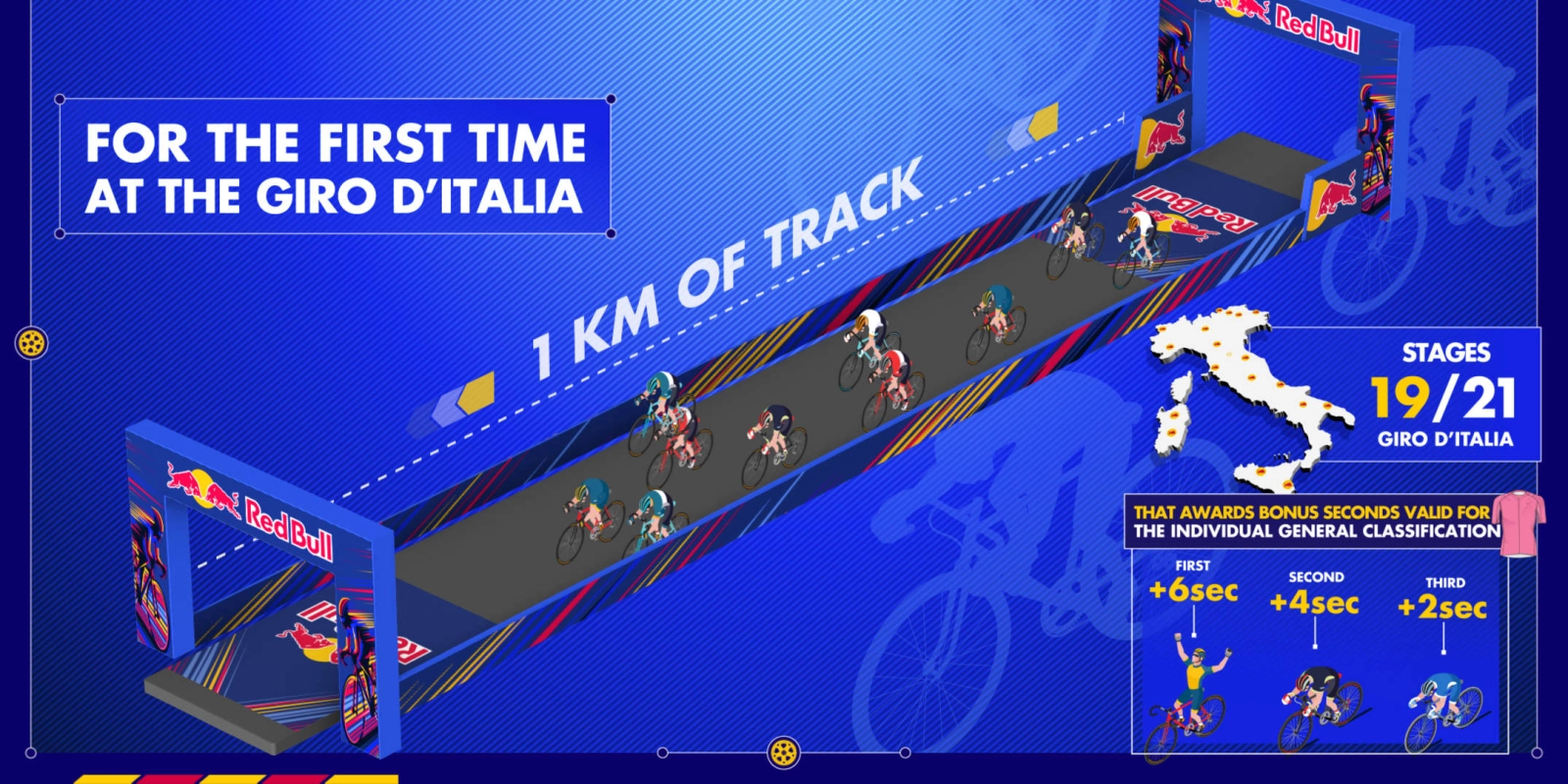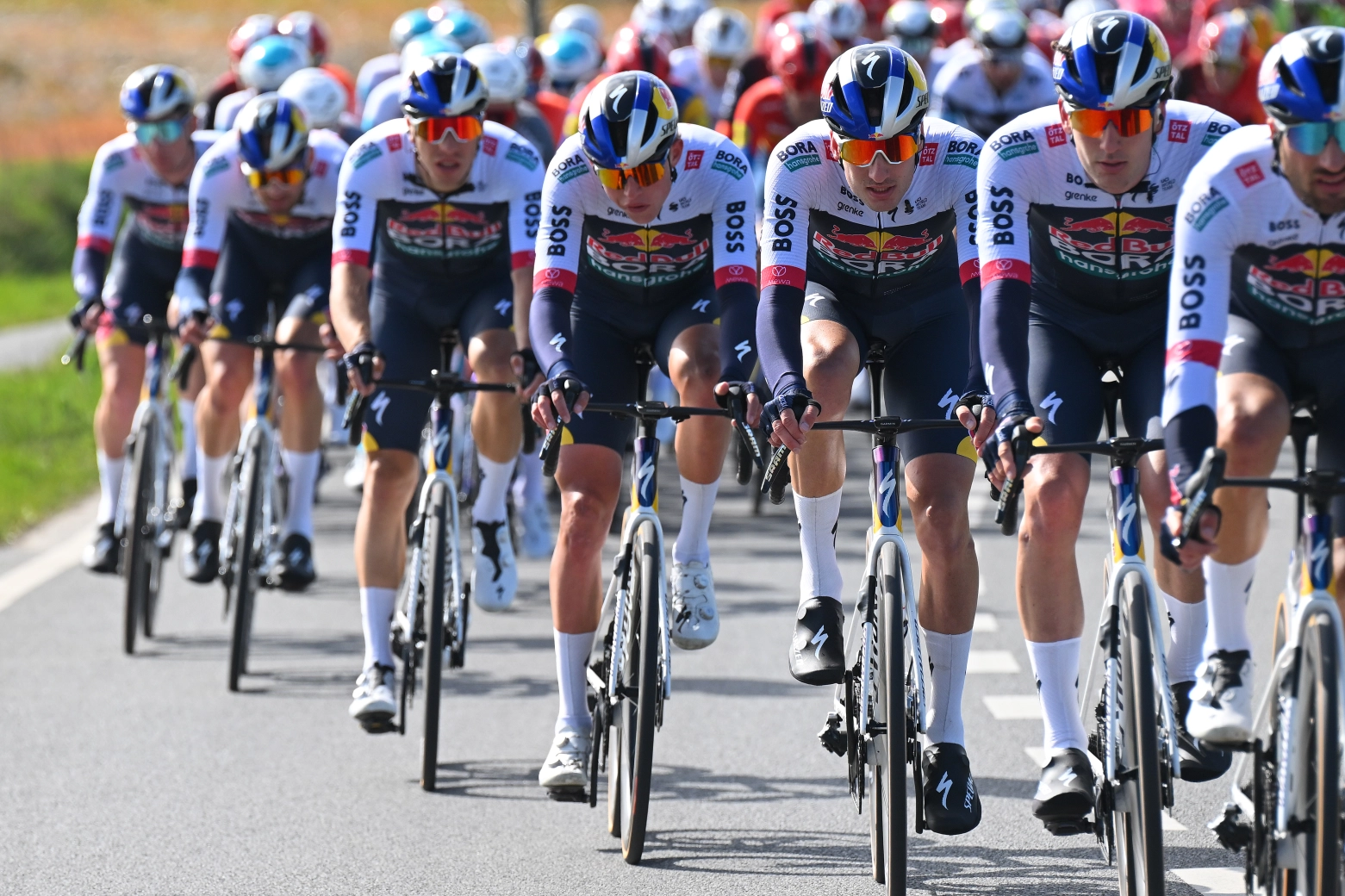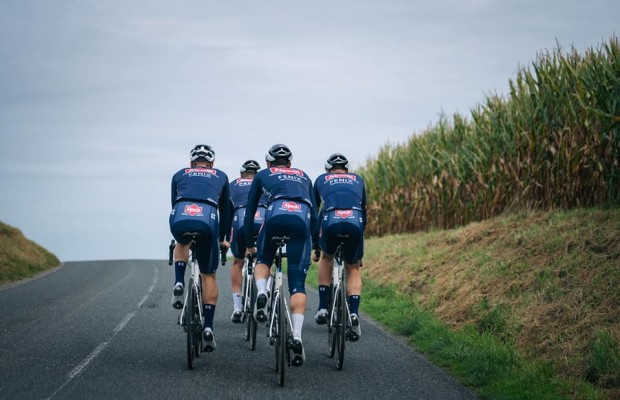The Red Bull KM arrive at the Giro d'Italia
The 2025 Giro d'Italia, which starts on May 9th in Albanian lands, has just announced an agreement with the energy drink brand Red Bull to incorporate the so-called Red Bull KM in each stage, a marked kilometer with imagery from the Austrian brand that will grant time bonuses to the best in the competition.

The time bonuses sprints in the Giro d'Italia will now be called Red Bull KM
Despite the pompous name and all the visual spectacle that will accompany these new Red Bull KM, with an entry banner, a fenced kilometer decorated with the image of the energy drink brand, and a finish arch marking the end of this section, the reality is that, after all this spectacle, we have a mere time bonus sprint that is incorporated into the route of each stage, granting 6, 4, and 2 seconds to the first cyclists to cross the final banner of these Red Bull KM.
To give greater relevance to the bonuses granted by the Red Bull KM at the finish line, only 10 seconds will be granted to the winner.
RECOMENDADO

The difference with the usual time bonus sprints, following the example of the Vuelta and Tour, is that the Red Bull KM of the 2025 Giro d'Italia will not always be located on flat terrain, and for example, we may find some as demanding as the one that will be in the middle of the climb to Colle de la Finestre in the decisive twentieth stage.
Furthermore, the brand warns that, in the twenty-first and final stage, the Red Bull KM has prepared an "incredible surprise" for the entire peloton.
The presence of the Red Bull KM does not eliminate the usual intermediate sprints, two per stage, which continue to provide points for those fighting for the maglia ciclamino in this secondary classification.





